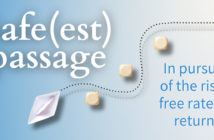The cost of higher education has led to increased student debt and other consequences, but there are alternatives.
by ALFREDO ORTIZ
For many Americans, back to school means back to worrying about college debt.
In 1980, the inflation-adjusted average cost for one year of tuition and fees at a public four-year in-state university was $2,340. Since then, expectations surrounding college attendance and increasing government intrusion in the education market has caused the cost of higher education to skyrocket. Compared to 1980, the yearly cost has quadrupled in real terms – now standing at an average of $9,648.
The ballooning costs of higher education have not gone without consequences. In total, our country’s college graduates have racked up $1.3 trillion of student loan debt, and it’s making it more difficult for them to transition into careers and adult life. The extra monthly student loan payments hinder their ability to afford moving expenses, housing costs, and any new attire or items needed to successfully navigate the workforce. It’s also making them delay marriage and children.
So the question is why are college costs so high in the first place?
SUPPLY AND DEMAND
Partially, the answer lies in the supply and demand relationship. As demand goes up, prices rise. In regards to higher education, there are two main factors that contribute to consumer demand. In order to compete in today’s knowledge economy, young people are increasingly attending college, with enrollment rates up 15 percent since 1992.
The increased drive to attend college isn’t necessarily a bad thing. It shows that a growing number of U.S. families want to invest more in their children’s future. However, it comes with a catch. As more people have expressed the desire to attend college, the federal government has become increasingly involved in subsidizing attendance.
In 2016, the federal government spent about $22.5 billion on a tuition assistance program known as a Pell Grant – roughly double the amount spent less than 15 years before. The motives behind government tuition assistance, as well as government student loan programs – which essentially hand out tens of thousands of dollars to anyone who wants to attend college – are noble. But these initiatives are also causing tuition costs to skyrocket because subsidies drive up costs.
Consider this analogy: Let’s say the price of a slice of pizza is usually $3 and the government decides to subsidize the price of each slice by giving all their customers $2. Consumers may pay what seems like $1 per slice for a little while, but not for long. The owner will quickly be incentivized to raise the price of a slice to $5 because the addition of government subsidies into the equation has essentially raised the demand for the product. In other words, the more money that chases after the same supply of goods will always cause prices to rise in a free market system.
By subsidizing the cost of a product, the government truly hasn’t decreased the price burden onto customers at all. Instead, pizza lovers are paying a higher out-of-pocket price, while their tax dollars go towards paying for the pizza as well. It’s a lose-lose situation.
Artificially inflated college prices are a huge problem – and one that is growing by the day. In order to bring prices down for everyone, the government must reduce its involvement in higher education.
OTHER ALTERNATIVES
However, this doesn’t mean that those without the necessary income – even after prices come down to market rates with less government involvement – to afford the sticker price of a traditional four-year institution are out of luck. Scholarships based off of merit and hard work will always be provided by universities because it is for their own benefit to have smart capable students attend their school. Other scholarships and grants can also fill the gap.
There’s also another alternative route that young people can take after high school. By attending a reasonably priced technical school, participating in an apprenticeship program, or simply learning career building skills as you gain experience in the job market, people can get good paying jobs that pay $50,000 a year or more. In fact, there are roughly 6 million available positions nationwide right now just waiting for a skilled candidate to fill them.
So as AAHOA members continue to be concerned about unaffordable tuition costs for their families, I urge you to not simply support more government programs that will increase costs further, but to apply the free market cost reduction mechanism that keeps prices low for every other product or service in the economy to the education market. ■
Alfredo Ortiz is the president and CEO of the Job Creators Network.
Photo credit: Brian A. Jackson/Shutterstock.com




